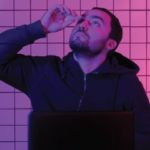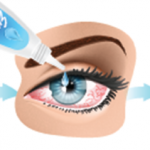A Wish List for Research and Clinical Management
Research
- Make it a priority to find a definitive test, such as a novel biomarker, that can accurately identify Sjögren’s or even preclinical disease.
- Clearly define the spectrum of manifestations of Sjögren’s. Study large numbers of patients to determine:
- The prevalence of various symptoms and complications, including fatigue, pain, quality of life, and cognitive function, which are often overlooked in research and clinical settings.
- The tendency of the disease to flare and progress, with and without treatment.
- Which interventions make a difference. We must start thinking outside the box. Many experts agree that various environmental factors may be key in triggering autoimmunity in a variety of diseases. It seems logical that different triggers may combine to push susceptible individuals over the tipping point into clinical disease.
- How diet, pathogens, the microbiome, stress, pain, and toxins affect the development and progression of Sjögren’s. What is the role of complementary medicine?
Clinical Practice Guidelines
ad goes here:advert-1
ADVERTISEMENT
SCROLL TO CONTINUE
- Create practical guidelines for management, not limited to sicca complex. The Sjögren’s Syndrome Foundation is currently engaged in this initiative.
- Implement a meaningful disease activity index that includes an assessment of fatigue, pain, and quality of life at every visit.
- Routinely assess common systemic manifestations, including gastrointestinal, respiratory, cognitive, and neurologic manifestations.
Educate Medical Providers, Including Those in Primary Care, about Sjögren’s
Most clinicians are either unfamiliar with Sjögren’s or underestimate the prevalence and severity of the disease.
ad goes here:advert-2
ADVERTISEMENT
SCROLL TO CONTINUE
- Sjögren’s needs to become a front-burner diagnosis. Clinicians who treat adult women probably see a significant number of Sjögren’s patients, frequently missing clues that could lead to diagnosis.
- Clinicians should understand that the current classification criteria are meant to be used for research, and can be misleading when applied to individual patients in a clinical setting for the purposes of diagnosis. Lack of laboratory or biopsy confirmation does not rule out diagnosis.
- Train clinicians about the common and scattered manifestations of the disease. Recommend steps to diagnosis and basic management of common symptoms.
- And finally, stop telling us to be glad that we don’t have lupus!
Dr. Schafer is a patient with Sjögren’s and an advocate for the Sjögren’s Syndrome Foundation. Previously, she was a public health physician focused on child health, family planning, and STD for the city of San Francisco and Contra Costa County.
References
- Helmick CG, Felson DT, Lawrence RC, et al. National Arthritis Data Workgroup. Estimates of prevalence of arthritis and other rheumatic conditions in the United States, Part I. Arthritis Rheum. 2008;58:15-25.
- Seror, R, Ravaud P, Bowman S, et al. EULAR Sjögren’s Syndrome disease activity index: Development of a consensus systemic disease activity index for primary Sjögren’s syndrome. Ann Rheum Dis. 2010;69:1103-1109.
- Ng, Wan-Fai. Primary Sjögren’s syndrome: Too dry and too tired. Rheumatology. 2010;49:844-853.
- Shiboski SC, Shiboski CS, Criswell A, et al. American College of Rheumatology classification criteria for Sjögren’s syndrome: A data-driven, expert consensus approach in the Sjögren’s International Collaborative Clinical Alliance Cohort. Arthritis Care Res (Hoboken). 2012;64:475-487.
- Ramos-Casals M, Brito-Zeron, P, Siso-Almirall A, Bosch X, Tzioufas AG. Topical and systemic medications for the treatment of primary Sjögren’s syndrome. Nat Rev Rheumatol. 2012;8:399-411.


